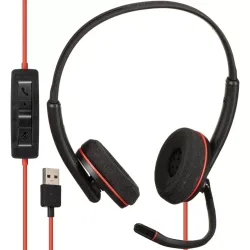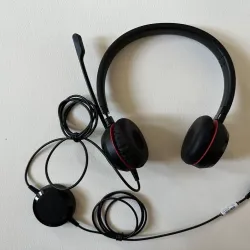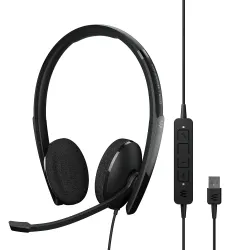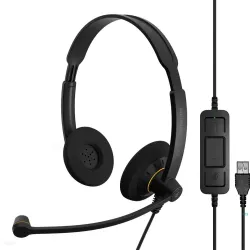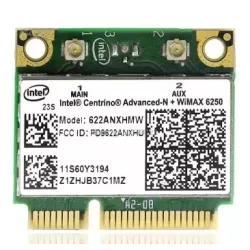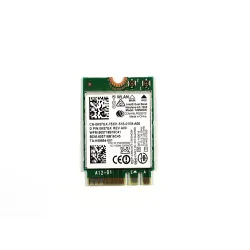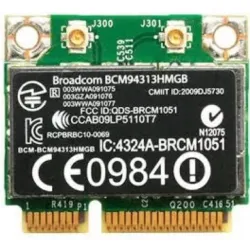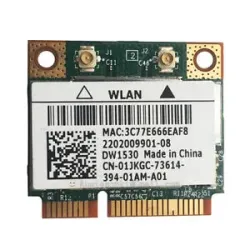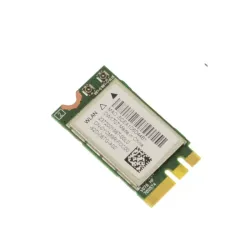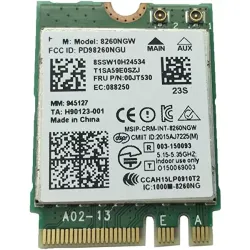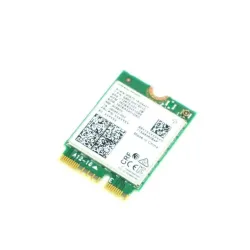Top Wi-Fi Wireless Cards of 2023 - Acer, Cisco, Dell, HP, Lenovo, Samsung, Sony
What is a Wireless Card?
A wireless card, also known as a wireless network adapter, is a hardware component that allows a device to connect to a wireless network. It is commonly used in computers, laptops, and other devices that do not have built-in wireless connectivity.
A wireless card typically connects to a device through a USB port or a PCIe slot and enables wireless communication with Wi-Fi networks, Bluetooth devices, and other wireless networks. It receives and transmits wireless signals to connect to the Internet or other wireless devices, allowing users to browse the web, stream videos, and perform other online activities.
Wireless cards come in various types and standards, including 802.11a, 802.11b, 802.11g, 802.11n, 802.11ac, and 802.11ax. The type of wireless card that you choose will depend on your device's compatibility and the network you want to connect to.
The Top 10 Best Wireless Cards for Gaming in 2023
Here are the top 10 best wireless cards for gaming in 2023:
ASUS PCE-AC88 AC3100 Wireless Adapter
This is a high-performance wireless card with a maximum data transfer rate of 3100Mbps, making it ideal for high-speed gaming and streaming.
TP-Link Archer T9E AC1900 Wireless Adapter
This wireless card offers speeds of up to 1900Mbps and supports the latest 802.11ac Wi-Fi standard for fast and reliable gaming.
Gigabyte GC-WB867D-I Wireless Adapter
This wireless card offers dual-band connectivity, with speeds of up to 867Mbps, and supports Bluetooth 4.2 for easy connectivity with other devices.
ASUS PCE-AC56 AC1300 Wireless Adapter
This wireless card offers up to 1300Mbps and two detachable antennas for improved signal strength and coverage.
TP-Link Archer T6E AC1300 Wireless Adapter
This wireless card is affordable and offers speeds of up to 1300Mbps, making it a good option for budget-conscious gamers.
Intel Wi-Fi 6 AX200 Wireless Adapter
This wireless card supports the latest Wi-Fi 6 standard for fast and reliable connectivity, with speeds of up to 2400Mbps.
Netgear Nighthawk AC1900 Wi-Fi USB Adapter
This wireless card offers speeds of up to 1900Mbps and a magnetic cradle for easy placement and improved signal strength.
ASUS PCE-AC68 AC1900 Wireless Adapter
This wireless card offers speeds of up to 1900Mbps and comes with three detachable antennas for improved signal strength and coverage.
Rosewill AC1200 PCI-E Wireless Adapter
This wireless card offers speeds of up to 1200Mbps and comes with two detachable antennas for improved signal strength and coverage.
D-Link DWA-192 AC1900 USB Wi-Fi Adapter
This wireless card offers speeds of up to 1900Mbps and comes with a unique design and LED lighting for a cool look.
Overall, these wireless cards offer fast and reliable connectivity for gamers, with high data transfer rates, strong signal strength, and compatibility with the latest Wi-Fi standards.
The Future of Wireless Cards
The future of wireless cards is likely to be shaped by several emerging technologies and trends. Here are some potential developments that could shape the future of wireless cards:
Wi-Fi 6E
The Wi-Fi 6E standard expands on the existing Wi-Fi 6 standard by using additional radio frequencies in the 6 GHz band. This could lead to faster speeds and less interference in congested areas, which could be especially beneficial for gamers.
5G connectivity
5G networks are being rolled out across the world, and could potentially offer even faster wireless speeds and lower latency than Wi-Fi. In the future, it's possible that wireless cards could be designed to support both Wi-Fi and 5G connectivity.
Advanced antenna technology
Antenna technology is continuing to evolve, and could potentially allow for wireless cards with stronger and more precise signals. This could be especially useful in environments with much interference, such as crowded gaming conventions or LAN parties.
Integration with other devices
Wireless cards could potentially be integrated with other devices, such as gaming mice or keyboards, to offer improved performance and reduce latency.
Artificial intelligence
Artificial intelligence and machine learning could potentially be used to optimize wireless performance and reduce latency. This could lead to more responsive gaming experiences and fewer dropped connections.
Overall, the future of wireless cards looks bright, with potential developments in Wi-Fi, 5G, antenna technology, and artificial intelligence offering the promise of faster speeds, lower latency, and better performance for gamers and other users.
No, not every PC has a wireless card. Some older desktop computers and laptops may not have built-in wireless connectivity and would require the use of a separate wireless card or USB adapter to connect to Wi-Fi networks. Additionally, some desktops may come with a wireless card pre-installed, while others may not. It's important to check the specifications of your computer to determine if it has built-in wireless connectivity or if you need to add a wireless card or adapter.
The location where you plug in your wireless card depends on the type of card you have. If you have a PCIe wireless card, you will need to plug it into a PCIe slot on your motherboard. These slots are typically located near the bottom of your motherboard and are identified by their long, narrow shape.
A wireless card is a hardware component that enables a computer to connect to a wireless network, such as Wi-Fi. It allows the computer to communicate wirelessly with a Wi-Fi router or access point, enabling the user to access the internet or connect to other devices on the network without the need for a physical cable connection.
A PCI wireless card is a hardware component that connects to a computer's motherboard via a PCI slot and provides wireless connectivity to the computer. It allows the computer to communicate wirelessly with a Wi-Fi router or access point, enabling the user to access the internet or connect to other devices on the network without the need for a physical cable connection. PCI wireless cards typically offer faster speeds and more stable connections than USB wireless adapters, making them a popular choice for desktop computers.

